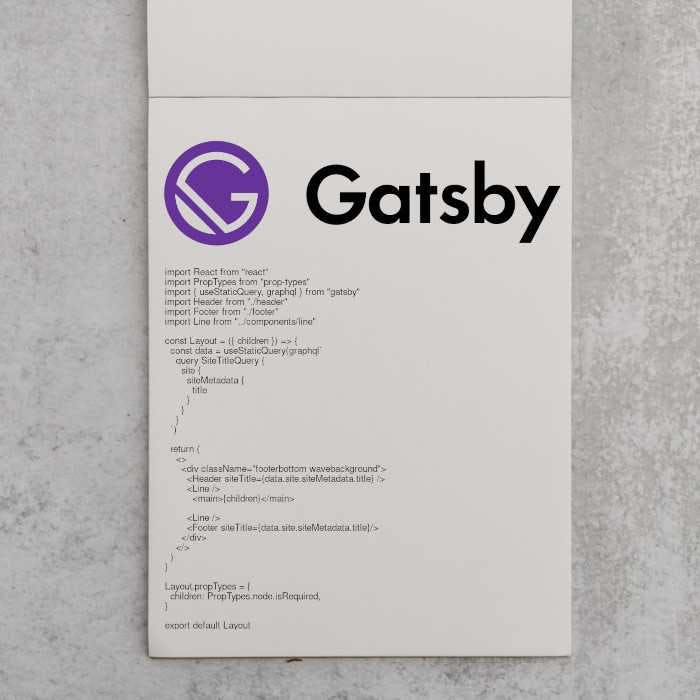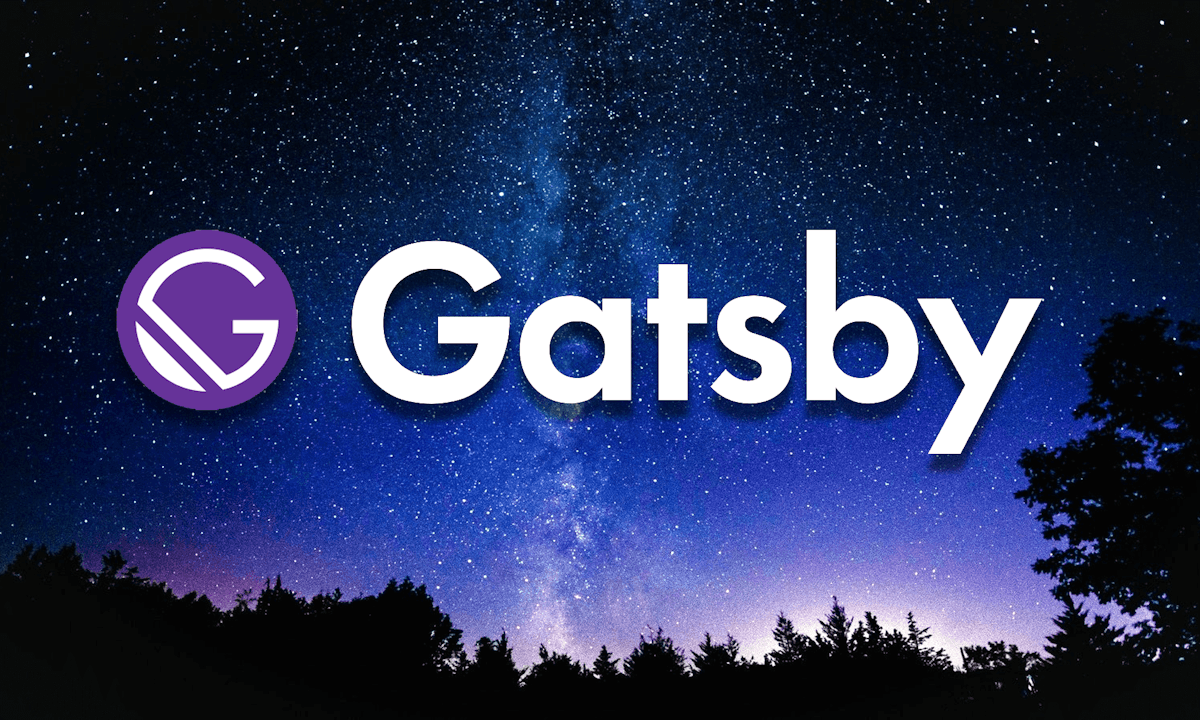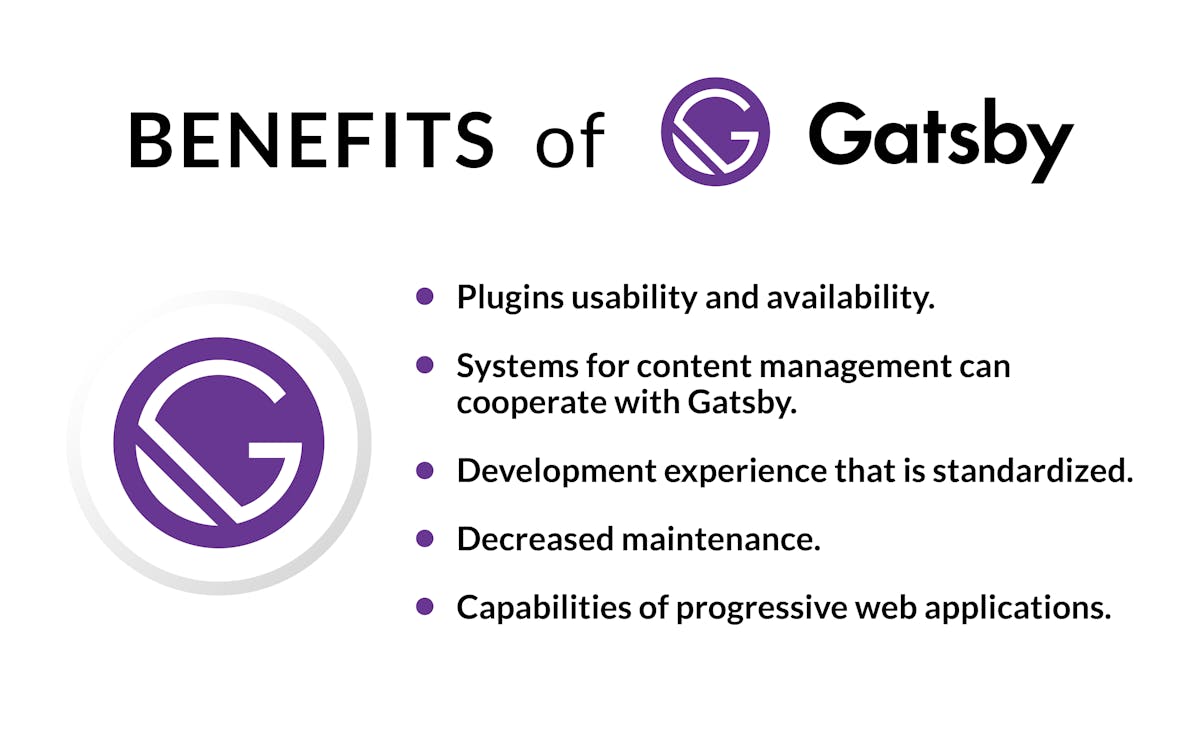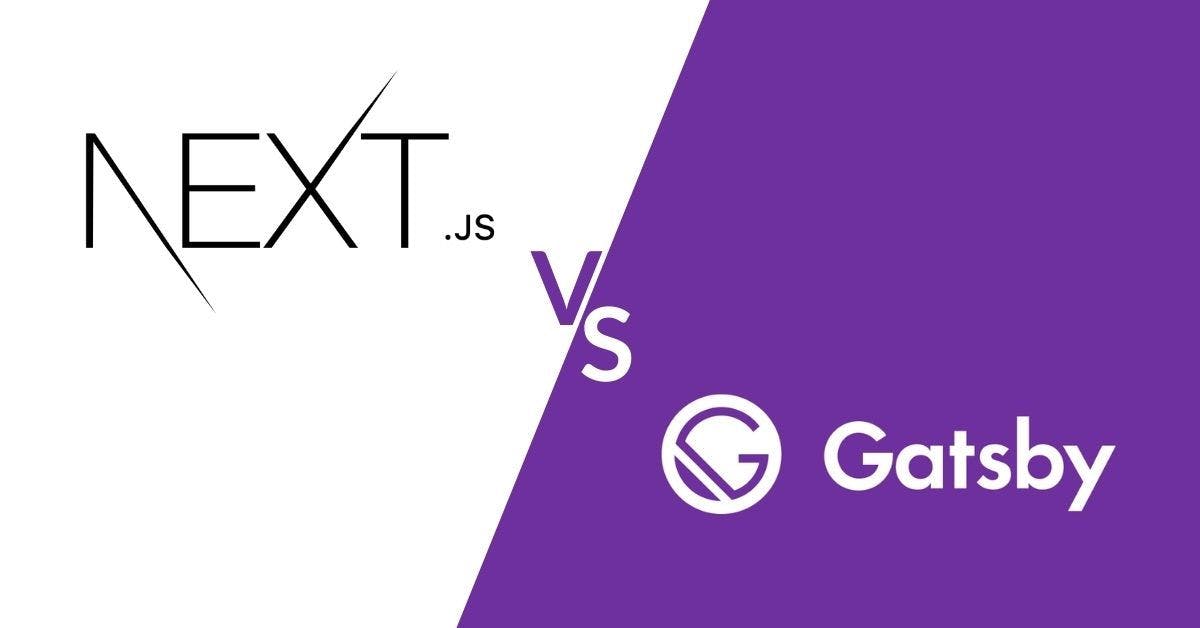
Gatsby.js: Building Lightning-Fast, SEO-Optimized Websites
by Irina KedyarovaAugust 4th, 2023
Summary
What is Gatsby.js?
What is Gatsby.js used for?
Advantages of Gatsby.js
Which is better, GatsbyJS or NextJS?
Is Gatsby bad for SEO?
Why is Gatsby so popular?
FAQs
Scroll to read all the article.
What is Gatsby.js?
Gatsby.js is a modern open-source framework based on React that is designed to build high-performance websites and applications. It is a static site generator, which means it creates static HTML, CSS, and JavaScript files during the build process. Unlike traditional dynamic server-rendered frameworks, Gatsby.js pre-renders pages and delivers them through a Content Delivery Network (CDN), resulting in extremely fast loading times and optimal user experiences.
What is Gatsby.js used for?
Gatsby.js is primarily used for building high-performance websites and web applications. As a static site generator based on React, it excels in creating static HTML, CSS, and JavaScript files during the build process. This approach offers several advantages that make Gatsby.js a popular choice among developers:
Blazing-Fast Websites:
Gatsby.js generates pre-built static files, which are delivered through a Content Delivery Network (CDN). This results in lightning-fast loading times and an optimal user experience, particularly on slower internet connections and mobile devices.
SEO Optimization:
Gatsby.js is designed with SEO in mind. By pre-rendering pages and optimizing metadata, Gatsby.js ensures that search engines can easily index and rank the content. This can lead to higher search engine rankings and increased organic traffic.

Developer-Friendly:
Gatsby.js has an extensive ecosystem of plugins and themes, allowing developers to extend its functionality easily. It also provides a straightforward and well-documented API, making it accessible to developers of various skill levels.
Security:
The static nature of Gatsby.js reduces the potential attack surface, making websites built with Gatsby.js more secure against common web vulnerabilities.
Scalability:
Gatsby.js can scale efficiently, making it suitable for projects of any size, from simple blogs to complex enterprise applications.
Content Management System (CMS) Integration:
Gatsby.js can be integrated with various CMS platforms, such as WordPress and Contentful, allowing content creators to manage and update the content seamlessly.
Performance Optimization:
Gatsby.js offers various performance optimization techniques, such as code splitting, image optimization, and lazy loading, ensuring the website performs efficiently even with large amounts of content and media.
PWA (Progressive Web App) Support:
With Gatsby.js, it's straightforward to create Progressive Web Apps, enabling users to have an app-like experience on the web.
Serverless Architecture:
Gatsby.js can be deployed on serverless platforms, reducing hosting costs and simplifying deployment.
E-commerce:
Gatsby.js can be used to build e-commerce websites, providing fast and SEO-friendly online shopping experiences.
In summary, Gatsby.js is a powerful tool for developers and businesses looking to create high-performance, SEO-optimized websites and applications with exceptional user experiences. Its focus on speed, security, and flexibility makes it a top choice for modern web development projects.
Is Gatsby.js still relevant?
Gatsby.js is still very relevant and widely used in the web development community. However, technology landscapes are constantly evolving, and it's essential to consider whether Gatsby.js is still relevant in the current time frame.
Some insights on factors that could determine Gatsby.js's relevance in the present or future are presented below:
Community and Popularity:
One of the key indicators of a technology's relevance is its community and popularity. If Gatsby.js continues to have an active and engaged community with a growing user base, it is likely to remain relevant.
Updates and Development:
Regular updates and advancements in the framework can indicate that the maintainers are actively working to improve and adapt Gatsby.js to modern web development needs.
Competition:
The web development ecosystem is dynamic, with new frameworks and tools emerging regularly. Gatsby.js's relevance could be affected by how well it competes with other static site generators and web development frameworks.
Adoption by Industry:
The adoption of Gatsby.js by prominent companies or organizations can also influence its relevance. If it continues to be embraced by various industries for building websites and applications, it is likely to stay relevant.
Technological Advancements:
The relevance of Gatsby.js may depend on its ability to keep up with the latest technological trends and integrate well with new technologies and practices.
Performance and SEO:
If Gatsby.js continues to excel in delivering high-performance websites with excellent SEO capabilities, it will remain an attractive option for developers.
To get the most current and accurate information, it is recommended to check recent web development trends, community forums, and official Gatsby.js resources. Always verify with up-to-date sources to determine the current relevance of Gatsby.js in the web development landscape.

Is Gatsby full stack?
Gatsby.js is not a full-stack framework on its own. It is primarily a front-end framework used for building static websites and web applications. As a static site generator, Gatsby.js focuses on generating static HTML, CSS, and JavaScript files during the build process.
However, Gatsby.js can be combined with other technologies to create full-stack applications. It is common to use Gatsby.js as the front-end layer and pair it with a back-end technology or serverless architecture to handle dynamic functionality and data processing.
For example, developers often use Gatsby.js with headless Content Management Systems (CMS) like WordPress or Contentful. In this setup, Gatsby.js retrieves data from the CMS via APIs during the build process, creating static pages with dynamic content. The dynamic data is fetched and rendered on the client-side using React components.
Additionally, Gatsby.js can be integrated with serverless functions, microservices, or back-end frameworks to handle user authentication, form submissions, database operations, and other dynamic functionalities.
In summary, while Gatsby.js is not a full-stack framework on its own, it can be part of a full-stack solution when combined with other technologies to handle both front-end and back-end functionalities in a web application.
Advantages of Gatsby.js
Gatsby.js offers several advantages that have contributed to its popularity among web developers. Some of the key advantages of Gatsby.js include:
Blazing-Fast Performance:
Gatsby.js generates static HTML, CSS, and JavaScript files during the build process, resulting in incredibly fast loading times. Websites built with Gatsby.js are pre-rendered and delivered through a Content Delivery Network (CDN), ensuring optimal performance for users, even on slower internet connections and mobile devices.
SEO-Friendly:
Gatsby.js is designed with search engine optimization (SEO) in mind. By pre-rendering pages and optimizing metadata, Gatsby.js makes it easier for search engines to index and rank the content. This can lead to better search engine rankings and increased organic traffic to websites.
Developer Experience:
Gatsby.js provides a seamless development experience for developers. It offers a rich ecosystem of plugins and themes, making it easy to extend functionality and customize websites. The framework's comprehensive documentation and community support make it accessible to developers of all skill levels.
Security:
The static nature of Gatsby.js reduces the potential attack surface, making websites built with Gatsby.js more secure against common web vulnerabilities.
Scalability:
Gatsby.js can scale efficiently, making it suitable for projects of varying sizes, from simple blogs to complex enterprise applications.
Content Management System (CMS) Integration:
Gatsby.js can be easily integrated with various CMS platforms, such as WordPress and Contentful, allowing content creators to manage and update the content seamlessly.
PWA (Progressive Web App) Support:
Gatsby.js makes it straightforward to create Progressive Web Apps, enabling users to have an app-like experience on the web, including offline access and improved performance.
Rich Plugin Ecosystem:
Gatsby.js offers a wide range of plugins that extend its functionality. These plugins cover various use cases, such as image optimization, data sourcing, and analytics integration, making it easier to add new features to a website.
Serverless Architecture:
Gatsby.js can be deployed on serverless platforms, reducing hosting costs and simplifying deployment.
Community Support:
Gatsby.js has an active and supportive community of developers, contributing to its continuous improvement and development.
In summary, Gatsby.js is favored by developers for its speed, SEO capabilities, developer-friendliness, and ability to create highly performant and scalable websites and web applications.

Which is better, GatsbyJS or NextJS?
The choice between Gatsby.js and Next.js depends on the specific requirements and goals of your web development project. Both frameworks have their strengths and are well-suited for different use cases.
Gatsby.js:
Static Site Generation (SSG):
Gatsby.js is primarily designed for static site generation. It excels in creating blazing-fast websites with pre-built static files, making it ideal for content-focused sites, blogs, and marketing pages.
SEO Optimization:
Gatsby.js provides built-in SEO features, making it easier for websites to rank higher in search engine results.
Content Management System (CMS) Integration:
Gatsby.js can be easily integrated with headless CMS platforms, enabling content creators to manage and update content efficiently.
Performance:
Gatsby.js is known for its exceptional performance due to its static nature and pre-rendering capabilities.
Next.js:
Server-Side Rendering (SSR) and Static Site Generation (SSG):
Next.js offers both SSR and SSG options, providing more flexibility in handling dynamic content and server-side data rendering. This makes it suitable for a wide range of projects, from simple static sites to complex web applications.
Hybrid Applications:
Next.js allows developers to mix SSR and client-side rendering, enabling the creation of hybrid applications with the benefits of both server-side and client-side rendering.
Data Fetching Flexibility:
Next.js provides various data fetching methods, giving developers more control over how data is fetched and displayed on the client side.
Dynamic Routing:
Next.js offers dynamic routing capabilities, which can be helpful for projects with complex page structures.
Read our detailed article about Next.js.

In summary, choose Gatsby.js if you need a static site generator with excellent performance and SEO capabilities, particularly for content-focused websites. On the other hand, choose Next.js if you require more flexibility in handling dynamic content, server-side rendering, and data fetching options, making it suitable for a wider range of web development projects, including dynamic web applications.
Ultimately, the best choice depends on your project's specific requirements, development approach, and long-term goals. Many developers find value in both frameworks and may choose to use them for different types of projects based on their unique needs.
Is Gatsby bad for SEO?

Gatsby.js is not bad for SEO. In fact, Gatsby.js is known for its excellent SEO capabilities and is considered to be SEO-friendly. There are several reasons why Gatsby.js is beneficial for SEO:
Static Site Generation (SSG):
Gatsby.js generates static HTML files during the build process. This means that the content is pre-rendered and available directly on the page, making it easy for search engine crawlers to index and understand the content.
Fast Loading Times:
Gatsby.js websites are highly performant and load quickly due to their static nature and the use of Content Delivery Networks (CDNs). Search engines favor fast-loading websites, which can positively impact SEO rankings.
Optimized Metadata:
Gatsby.js allows developers to easily add and manage metadata, such as title tags, meta descriptions, and Open Graph tags. This helps search engines understand the content and display relevant information in search results.
Client-Side Navigation:
Gatsby.js uses client-side navigation for internal links, which allows search engine crawlers to easily follow and index the links on the website.
Canonical URLs:
Gatsby.js automatically handles canonical URLs, ensuring that search engines recognize the preferred version of a page and avoid duplicate content issues.
Image Optimization:
Gatsby.js provides built-in image optimization, which can improve website performance and user experience. Properly optimized images can also positively impact SEO rankings.
Sitemap Generation:
Gatsby.js allows the automatic generation of sitemaps, which helps search engines discover and index all the pages on the website.
Mobile-First Approach:
Gatsby.js encourages developers to adopt a mobile-first approach when building websites. Since mobile-friendliness is a significant factor in SEO rankings, this approach can be advantageous.
It's important to note that while Gatsby.js provides a strong foundation for SEO, SEO performance also depends on how the website is developed, the quality of content, backlinking, and other SEO best practices. By following SEO guidelines and best practices, developers can optimize Gatsby.js websites for better search engine visibility and rankings.
Why is Gatsby so popular?
Gatsby.js has gained significant popularity in the web development community for several compelling reasons:
Performance:
Gatsby.js is known for creating high-performance websites with fast loading times. By generating static HTML, CSS, and JavaScript files during the build process, Gatsby.js eliminates the need for server-side rendering on every request, resulting in faster page loads and a smoother user experience.
SEO-Friendly:
Gatsby.js is designed with search engine optimization (SEO) in mind. Its static site generation approach and built-in SEO features make it easier for search engines to index and rank the content, leading to better search engine rankings and increased organic traffic.

Developer Experience:
Gatsby.js offers a pleasant and straightforward development experience for developers. It comes with a rich ecosystem of plugins and themes, making it easy to extend functionality and customize websites. Its comprehensive documentation and active community support make it accessible to developers of various skill levels.
Content Management System (CMS) Integration:
Gatsby.js can be easily integrated with various headless CMS platforms, such as WordPress or Contentful. This allows content creators to manage and update content efficiently, separating the content management from the front-end development process.
Scalability:
Gatsby.js is scalable and can handle projects of varying sizes, from simple blogs to complex web applications. Its performance remains consistent even as the website's content grows.
PWA Support:
Gatsby.js makes it straightforward to create Progressive Web Apps (PWAs), enabling users to have an app-like experience on the web, including offline access and improved performance.
Rich Plugin Ecosystem:
Gatsby.js offers a wide range of plugins that extend its functionality. These plugins cover various use cases, such as image optimization, data sourcing, and analytics integration, making it easier to add new features to a website.
Large and Supportive Community:
Gatsby.js has an active and growing community of developers. This community contributes to the continuous improvement and development of the framework, provides helpful resources, and offers support to fellow developers.
Open Source and Free:
Gatsby.js is an open-source framework, which means it is freely available for anyone to use and contribute to. This accessibility has contributed to its popularity and widespread adoption.
In summary, Gatsby.js stands out as a popular choice for web development due to its exceptional performance, SEO capabilities, developer-friendliness, and ability to create highly performant and scalable websites and web applications. Its strengths make it a go-to framework for many developers looking to build fast, SEO-optimized, and content-rich websites.
Best Frequently Asked Questions (FAQs)
In conclusion, Gatsby.js stands out as an exceptional choice for building performant, SEO-friendly websites and applications. Its static site generation, vast plugin ecosystem, and strong community support make it a top pick for developers aiming to deliver lightning-fast experiences to their users.
Comments
I started using Gatsby.js recently, and I'm amazed by how quickly I can build and deploy websites. The static site generation and client-side rendering make it a joy to work with!
CodeNinja87
Leave your comment
Your feedback is very important to us. Share your thoughts on what you read, or tell your own story.
Rating